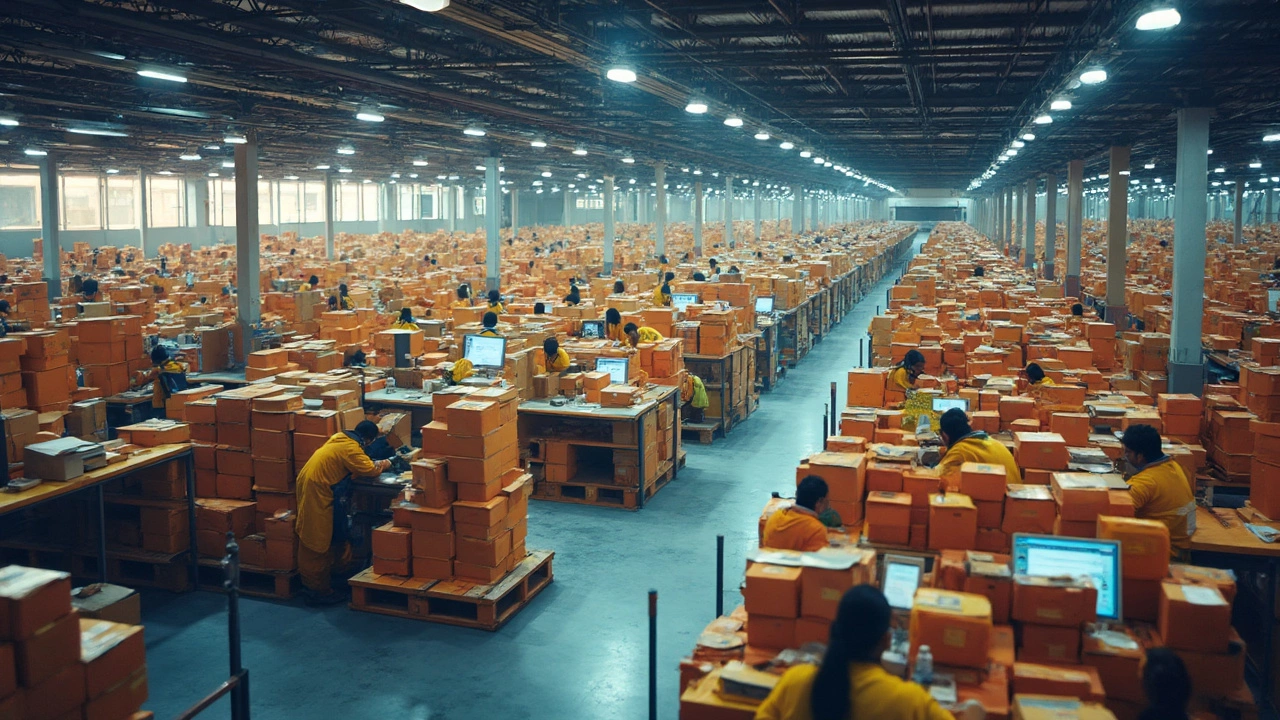Delivery Guides, Tips & Trends – Fast Shipping Made Simple
When you need to move a package, a pallet, or a whole batch of inventory, the word "delivery" covers a lot of ground. From the moment you click ‘buy’ online to the moment a customer opens the box, every step matters. This page pulls together the most useful articles on delivery, so you can cut the confusion and get the job done right.
We’ll walk through the biggest pain points – like last‑mile delays, overtime cut‑off times, and choosing the right carrier – and give you straight‑forward ways to fix them. No fluff, just tips you can start using today.
Common Delivery Challenges and How to Solve Them
First‑mile pickup often feels like the least exciting part, but a smooth start saves time later. Make sure your courier knows exactly where to find the parcel and what paperwork is needed. A quick call or a pre‑filled pick‑up sheet can prevent the dreaded "package received by courier" mystery that leaves customers guessing.
Last‑mile delivery is where most delays happen. Traffic, missed addresses, and limited delivery windows add up fast. One easy fix is to give customers a clear delivery slot and an option to reroute if needed. Real‑time tracking that shows the driver’s location reduces the "where is my order?" anxiety.
Overnight and next‑day services have strict cut‑off times. Miss the 5 pm deadline and you’re back to standard shipping. Keep a simple spreadsheet of each carrier’s cut‑off, and set an automated reminder in your order system. That way the team knows exactly when to hand off the parcel.
Rate‑per‑mile pricing can sneak up on you, especially for long‑haul routes. Compare the per‑mile cost of different carriers and factor in fuel surcharges, insurance, and any extra handling fees. Some brokers offer volume discounts, so talk to your account manager if you ship regularly.
Choosing the Right Delivery Service for Your Business
Not every carrier fits every business. If you ship small parcels across the country, a fast courier like FedEx or UPS might be best. For heavy freight or bulk items, look at specialized freight forwarders that handle palletized loads.
International shipping adds customs paperwork and duties. Pick a carrier with a strong network in your target country, and use the "most reliable international shipping" guides to see which companies have the best on‑time record.
For e‑commerce stores, integrating a warehouse management system (WMS) with your delivery platform can automate label printing, carrier selection, and tracking updates. This reduces manual errors and speeds up order fulfillment.
Finally, keep an eye on driver earnings if you rely on gig‑based drivers. Paying a fair per‑mile rate and offering tips can improve service quality and keep drivers happy – which translates to faster, more reliable deliveries for you.
Bottom line: Delivery is a chain of small steps, and each one can be tweaked for better speed and lower cost. Use the articles linked in this tag to dive deeper into each topic, from cut‑off times to the best international shippers. Start applying one tip today, watch the improvements roll in, and keep building a delivery process that works for you and your customers.
Courier Package Explained: Everything You Need to Know About Courier Deliveries
A courier package isn’t just any parcel. Get the full breakdown on what makes a courier shipment unique, from packing to tracking, in this detailed guide.
Read MoreCourier Services Explained: What Does Courier Include?
This article breaks down what courier services actually include, from pickup and delivery options to tracking perks and insurance coverage. Get the inside scoop on how couriers handle everything from important documents to packages and fragile items. Learn the extras couriers can offer, like same-day delivery or weekend service. Find tips on what to ask before you book and how to avoid common mistakes. Make sure you get exactly what you need from your next courier experience.
Read MoreCourier Service: Why Use One and What You Get Out of It
Ever wondered why people reach for a courier service instead of regular mail? This article breaks down the real benefits—speed, security, convenience, and flexibility—without the fluff. We look at situations where a courier saves the day and share tips for picking the right one. The aim is to help you figure out if a courier fits your next delivery mission. Get concrete examples and clear answers to questions you might not have even thought to ask.
Read MoreWhen Should You Use a Courier? Smart Times to Choose Delivery Services
Not every delivery needs a courier, but some situations absolutely call for one. This article explains when it makes sense to use a courier, breaking down the scenarios where speed, safety, and special care matter. Discover practical tips to pick the right service and avoid costly mistakes. Get the facts and make sure your packages land right where you want them, fast. Perfect if you’re sending something valuable, fragile, or just hate waiting.
Read MoreHow Does Logistics Work in E-Commerce?
E-commerce logistics is the backbone of every online shop, handling how products get from the seller to your doorstep. This article breaks down the different steps involved, from putting an item in your online cart to tracking it to your door. It explains how warehouses, shipping companies, and tech tools all play a role. You’ll see real tips for streamlining your company’s logistics and learn about the common problems stores face along the way. The goal? To help you get a clear, no-nonsense look behind the scenes of every delivery.
Read MoreIs Amazon Really a Courier Service?
Amazon has revolutionized how we buy and receive goods, often being mistaken for a courier service itself. While Amazon's logistics network is impressive, it primarily serves its own retail ecosystem rather than offering third-party courier services. However, the company's advanced delivery strategies, including its own fleet and use of flying drones, blur the lines between retail and logistics. Understanding Amazon's role as a logistics giant is essential for businesses considering their own delivery strategies.
Read MoreMost Popular E-commerce Company within Logistics
In the dynamic world of e-commerce logistics, one company consistently captures attention: Amazon. Known for its unrivaled distribution network and fast delivery, Amazon sets the bar high. Their continuous innovation in infrastructure and technology gives them a competitive edge. Discover how they've mastered logistics to maintain their market leader status.
Read More





